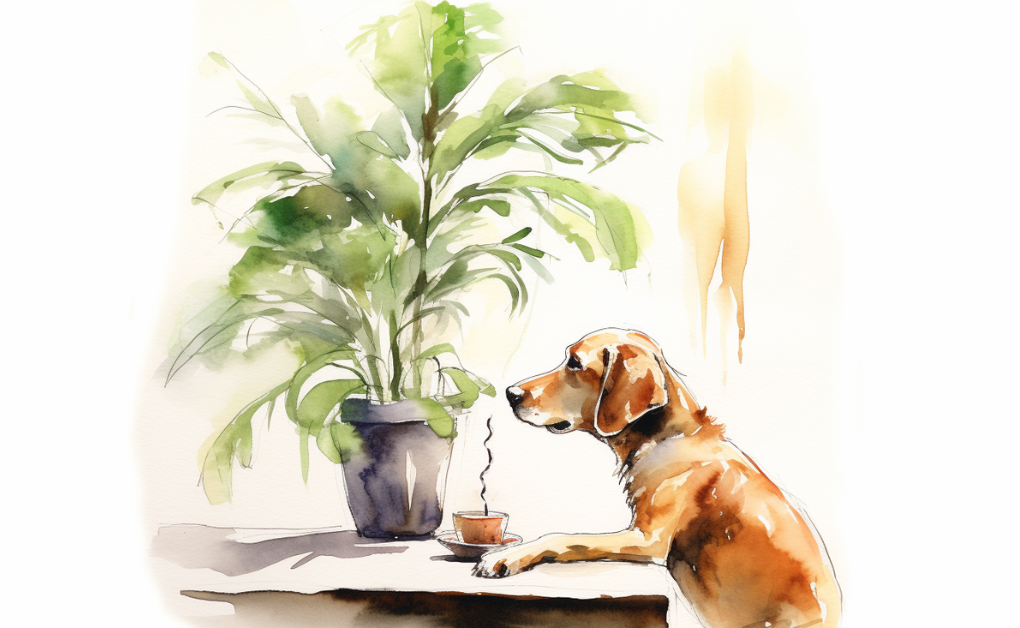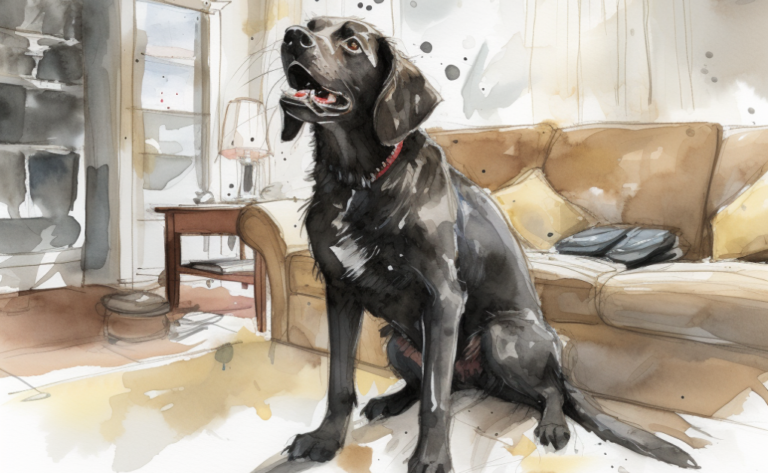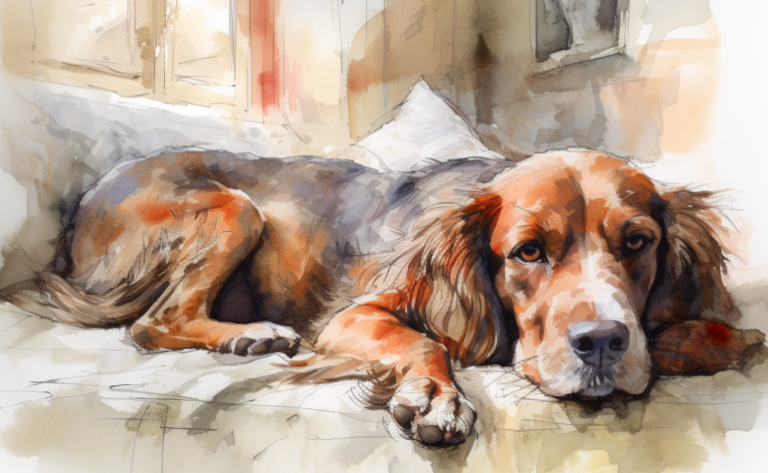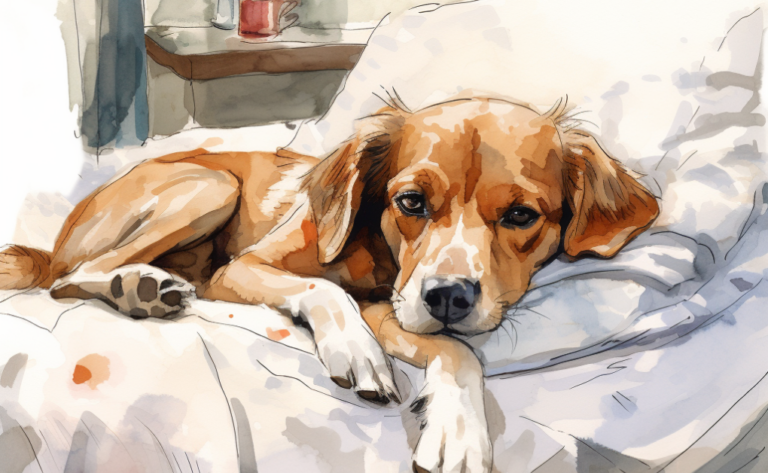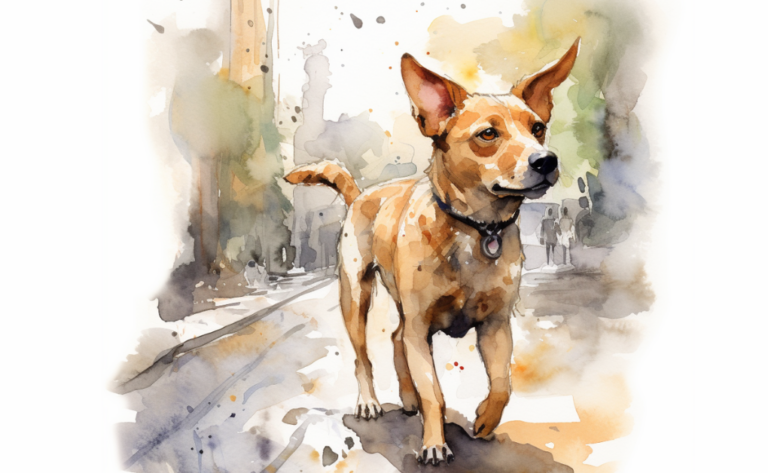What are Nasal Foreign Bodies in Dogs?
What is it?
How is it Treated?
Breed Predispositions
Any dog, regardless of breed or age, can be affected by this condition. However, factors such as activity level, curiosity, and exposure to outdoor hazards may increase the risk of nasal foreign bodies in some dogs.
Introduction
On a sunny afternoon, while enjoying a walk with her mischievous Beagle, Cooper, Lucy noticed him sniffing around some bushes with great curiosity. Suddenly, Cooper began sneezing uncontrollably and pawing at his nose. Concerned about her beloved pet’s distress, Lucy took him to the veterinarian for an urgent examination. After a thorough evaluation, the vet discovered that Cooper had a nasal foreign body lodged in his nasal passage, causing his discomfort.
Nasal foreign bodies in dogs denote any object that inadvertently enters and gets stuck within the dog’s nasal and nasopharyngeal passages, leading to discomfort, irritation, or obstruction. Such instances are commonly seen in dogs and cats, given their inherent curiosity and tendency to use their noses to investigate their surroundings. Research indicates that 81% of these foreign bodies are typical of vegetable origin, 14% are mineral-based, such as small pebbles, and approximately 4.8% consist of artificial materials.
This exploration can sometimes result in the dogs inhaling petite objects or particles like grass seeds, twigs, insects, or even tiny stones, which subsequently become lodged in their nasal cavities. When a dog gets something stuck in its nose, it can lead to problems such as inflammation, infection, and respiratory difficulties, marking a potential choking emergency if not promptly managed. Furthermore, it can lead to issues like nasal discharge, underlining the importance of swift treatment in oral and nasal cases.
Types of Foreign Bodies
If not addressed, nasal foreign bodies become lodged in a dog’s nasal passages, causing irritation, discomfort, and potentially severe complications. Some common nasal foreign bodies in dogs include:
- Grass awns (foxtails): These barbed seed heads can quickly become embedded in a dog’s nose when sniffing grassy areas.
- Seeds: Small seeds from plants or trees can be accidentally inhaled by dogs as they explore their environment.
- Twigs or small sticks: Dogs may inadvertently inhale these objects while chewing on them or playing in wooded areas.
- Insects: Bees, flies, or insects can become trapped in a dog’s nasal passage when sniffed or fly into the nose.
- Dust and dirt: Dogs who habitually dig or play in dusty environments may inhale dirt or dust that can become lodged in their nasal passages.
- Pebbles or small stones: Dogs that dig or play around gravel or rocky areas can accidentally inhale small stones.
- Toys or parts of toys: Pieces of chewed-up toys or small objects may be accidentally inhaled by dogs during playtime.
Dogs often get these foreign bodies in their nasal passages through natural curiosity and exploration of their environment. For example, they may sniff the ground or vegetation, dig in the dirt, or chew on objects, which can lead to accidental inhalation of the foreign body. Preventing nasal foreign bodies can be challenging, but monitoring your dog’s play and outdoor activities, providing safe toys, and keeping them away from areas with potentially dangerous objects can help reduce the risk.
Causes of Nasal Foreign Bodies in Dogs
Nasal foreign bodies in dogs predominantly occur due to the accidental inhalation or insertion of objects while the dog engages in natural exploratory or playful activities. In addition, the inherent curiosity of dogs and their acute sense of smell often lead to this form of nasal disease. The causes are usually as follows:
- Investigative Sniffing: Dogs habitually use their noses to examine their environment, which frequently involves sniffing the ground, vegetation, or diverse objects. Unfortunately, during this process, they might accidentally inhale small objects or particles, resulting in foreign material getting lodged in their nasal passages.

- Playtime Incidents: While frolicking with toys, sticks, or other objects, dogs may unintentionally inhale or insert small fragments into their noses. This behavior can lead to foreign body problems as objects become stuck in the nasal passages.
- Eating or Chewing: At times, dogs can inhale petite food particles or tiny bits of treats while eating or chewing. Such particles can lodge in the nasal passages, causing discomfort and irritation.
- Grooming: During self-grooming or grooming other animals, dogs may accidentally inhale fur, hair, or miscellaneous debris. Consequently, this can lead to foreign bodies embedded within the nasal passages.
- Trauma or Injury: In rare circumstances, a traumatic event or injury might cause foreign bodies to infiltrate a dog’s nasal passages. This could include facial injuries, a foreign object penetrating the nasal cavity, or other mishaps, as seen by UF Health professionals.
Dogs’ nasal foreign bodies often arise from their natural curiosity and exploratory behaviors. However, these can lead to other complications, like respiratory tract issues or even mimic symptoms of diseases like kennel cough. Therefore, pet owners should always be vigilant, ensure a safe environment, and minimize exposure to small objects that could cause such complications.
Symptoms of Nasal Foreign Bodies in Dogs
Please pay attention to your pet’s behavior when they have trouble breathing. Also, could you contact your veterinarian immediately if your dog starts coughing or sneezing repeatedly or their nose becomes congested?
Several signs indicate that your pet may have an NFB lodged in its nose. Some common symptoms include:
- Sneezing
- Coughing
- Difficulty breathing
- Nosebleeds
- Watery eyes
- Drooling
- Redness around the mouth
- Vomiting
- Loss of coordination
Diagnosis of Nasal Foreign Bodies in Dogs
When diagnosing nasal foreign bodies in dogs, veterinarians use a combination of physical examination, history taking, and diagnostic imaging techniques. Here is a detailed description of the process:

History and Clinical Signs
The vet will ask the pet owner about any observed symptoms and the dog’s recent activities. Common clinical signs of nasal foreign bodies include sneezing, nasal discharge, pawing at the nose, and difficulty breathing.
Physical Examination
The veterinarian will carefully examine the dog’s nose, looking for any visible foreign bodies, swelling, or discharge. Sometimes, they may be visible and easily removed during the examination.
Rhinoscopy
The veterinarian may perform a rhinoscopy if the foreign body is not visible during the physical examination. Rhinoscopy is a diagnostic procedure that involves inserting a thin, flexible tube with a light and camera (endoscope) into the dog’s nasal passages. This allows the vet to visualize the inside of the nasal cavity and identify any foreign bodies, inflammation, or other abnormalities.
Diagnostic Imaging
In some cases, the veterinarian may use imaging techniques such as X-rays, computed tomography (CT) scans, or magnetic resonance imaging (MRI) to investigate the nasal passages further and identify foreign bodies, obstructions, or other issues.
Nasal Flushing
Nasal flushing, or lavage, involves introducing a saline solution into the dog’s nostrils to help dislodge or remove foreign bodies, mucus, or debris. This may be performed in conjunction with rhinoscopy or other diagnostic procedures.
Cytology and Culture
If an infection is suspected, the veterinarian may collect samples of nasal discharge or tissue for cytology and culture tests. These tests help identify the presence of bacteria, fungi, or other pathogens that may be causing or complicating the foreign body issue.
Once the veterinarian has identified the presence of a nasal foreign body, they will determine the most appropriate method for removal and any necessary follow-up treatment or care.
Treatment for Nasal Foreign Bodies in Dogs
Removing nasal foreign bodies in dogs is critical to prevent complications and ensure the pet’s well-being. Veterinarians use various techniques to treat foreign objects lodged in a dog’s nasal passage, depending on the foreign body’s size, location, and type.
Non-Surgical Treatment
Non-surgical treatment for nasal foreign bodies in dogs typically involves sedatives to calm the dog and carefully extract the foreign body. This can often be achieved with long tweezers or other tools designed for this purpose.
- Sedation: It’s often necessary to sedate the dog to keep it calm and still during the procedure. The exact sedative will depend on the dog’s health, size, and other factors.
- Extraction: The vet will use special tools to remove the foreign object from the dog’s nose carefully. Depending on the situation, this might involve tweezers, forceps, or a loop of wire.
- Aftercare: After removing the foreign body, the vet may prescribe antibiotics or anti-inflammatories to prevent infection and reduce swelling or pain.
Surgical Treatment
Surgical intervention may be required if the foreign body cannot be removed through non-surgical methods, has caused significant damage, or has migrated further into the nasal cavity or sinuses.
- Anesthesia: Because surgery is more invasive, general anesthesia is typically used to ensure the dog remains unconscious and pain-free during the procedure.
- Surgery: The exact surgical procedure will depend on the location and nature of the foreign body. This could involve an incision in the nasal cavity or accessing the area through the mouth if the object has migrated backward.
- Aftercare: Post-surgical care will likely involve pain management, antibiotics to prevent infection, and possibly a temporary dietary change. The dog may also need to wear a cone or other protective device to prevent it from interfering with the surgical site.
In both cases, the vet will perform a thorough examination and possibly diagnostic imaging to determine the exact location and nature of the foreign body before deciding on the best course of treatment.
Prevention of Nasal Foreign Bodies in Dogs
Preventing nasal foreign bodies in dogs involves minimizing the risk of accidental inhalation or insertion of objects into the nasal passages. Here are some strategies pet owners can use to reduce the likelihood of their dogs experiencing nasal foreign bodies:
- Supervise outdoor activities: Keep a close eye on your dog while exploring, particularly in areas with tall grasses, bushes, or other vegetation. This can help prevent them from sniffing or ingesting objects that could become lodged in their nasal passages.
- Choose appropriate toys: Choose toys designed for dogs and the right size for your pet to minimize the risk of accidental ingestion or inhalation. Avoid toys with small parts that could break off or become lodged in the nose.
- Maintain a clean environment: Regularly clean your home and yard to reduce the presence of small objects or debris that could pose a risk to your dog. Please pay special attention to areas where your dog spends most of their time, such as their play area or sleeping space.
- Regular grooming: Regularly groom your dog to remove loose fur, debris, and other particles that could be inhaled or lead to foreign bodies. This is particularly important for dogs with long or thick coats.
- Monitor eating habits: Supervise your dog during mealtime and provide them with appropriately sized food and treats to minimize the risk of inhaling particles or choking.
- Training and socialization: Teach your dog basic obedience commands, such as “leave it” or “drop it,” to help prevent them from picking up or ingesting potentially dangerous objects. Proper socialization can also reduce anxiety and stress, which may contribute to excessive sniffing or exploratory behaviors.
- Regular veterinary check-ups: Schedule regular veterinary visits to ensure your dog’s health and well-being. This can help identify potential health concerns, such as respiratory issues or infections, that could increase the risk of nasal foreign bodies.
By implementing these preventative measures, pet owners can minimize the risk of their dogs experiencing nasal foreign bodies and promote a safer environment for their canine companions.
Frequently Asked Questions
Disclaimer: The information provided on this veterinary website is intended for general educational purposes only and should not be considered as a substitute for professional veterinary advice, diagnosis, or treatment. Always consult a licensed veterinarian for any concerns or questions regarding the health and well-being of your pet. This website does not claim to cover every possible situation or provide exhaustive knowledge on the subjects presented. The owners and contributors of this website are not responsible for any harm or loss that may result from the use or misuse of the information provided herein.

